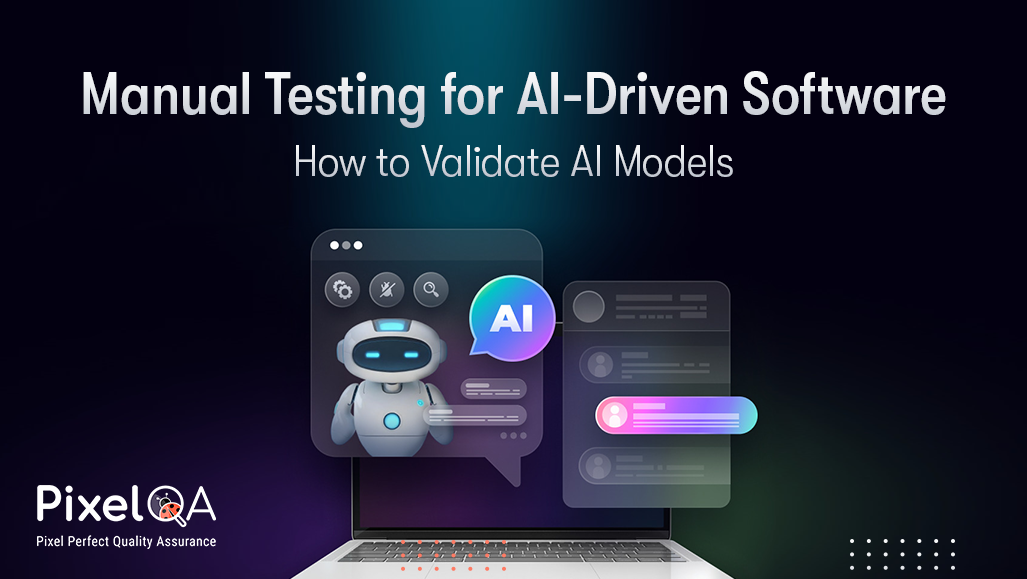
Table of Content
- Introduction
- What Is AI-Driven Software?
- Why Manual Testing Is Still Needed for AI?
- How to Do Manual Testing for AI Model
- Conclusion
Introduction
AI-driven software is becoming more common in our daily lives, from voice assistants to recommendation systems on shopping sites. But how do we make sure that these AI models are working correctly? While a lot of AI testing is automated, Manual Testing Services still plays a very important role. In this blog, we’ll explain in simple terms how manual testers can test AI-driven software and help ensure it works well.
What Is AI-Driven Software?
AI (Artificial Intelligence) software learns from data and makes decisions or predictions. For example:
- A chatbot that answers customer questions.
- A mobile app that identifies objects in photos.
- A system that recommends movies based on your watch history.
AI systems don't work based on fixed rules. They change based on the data they learn from. That’s what makes testing AI software tricky.
Why Manual Testing Is Still Needed for AI?
Even though AI systems often use automated testing and tools, manual testing is important because:
- AI can behave in unexpected ways.
- Manual testers can check real-world use cases.
- Humans can understand the context and intent behind AI responses better than machines.
How to Do Manual Testing for AI Models
Here are some simple steps for manual testers to follow when testing AI software:
1. Understand the AI’s Purpose
Know what the AI is supposed to do. For example:
- Is it predicting something?
- Is it making recommendations?
- Is it classifying or identifying something?
This helps you write better test cases.
2. Test with Realistic and Edge Inputs
Use common inputs like normal users would. Also test with rare, weird, or extreme inputs.
Example:
For a voice assistant, test both:
- “What’s the weather today?”
- “Tell me the climate situation in Marsville.”
3. Check for Bias or Unfair Results
AI models can sometimes show biased behavior.
Example:
A face recognition app might work better for one skin tone than another.
Testers should check and report these unfair results.
4. Validate the Output
AI doesn’t always give the right answer. Compare the AI’s result with what you expect.
Example:
If a photo app says a cat is a dog — that’s a clear mistake.
5. Review AI Behavior Over Time
Since AI learns and updates over time, it’s good to test regularly and see if the behavior is still correct.
Tip: Keep track of changes and compare them with previous results.
6. Use Exploratory Testing
Try using the software like a real user would, without following a strict script.
This can help you find unexpected issues.
7. Report Unclear or Confusing Behavior
Sometimes AI gives answers that are not technically wrong, but still confusing.
Example:
If a chatbot gives too many long answers, users may find it annoying.
Manual testers can report this as a usability issue.
Conclusion
Testing AI software is not just about checking if it 'works' it’s about ensuring it works correctly, fairly, and usefully. A skilled Software Testing Company understands that manual testers bring the human touch needed to evaluate AI systems effectively. By asking smart questions, thinking like users, and looking beyond the numbers, manual testers help make AI software more trustworthy and user-friendly.
About Author
Nikul Ghevariya is a dedicated QA Executive at PixelQA, evolving from a trainee to a valuable contributor across diverse projects. With ambitious goals, he aspires to master new QA tools, and delve into Automation and API testing, showcasing an unwavering commitment to continuous learning.

_638802296334344701.png)